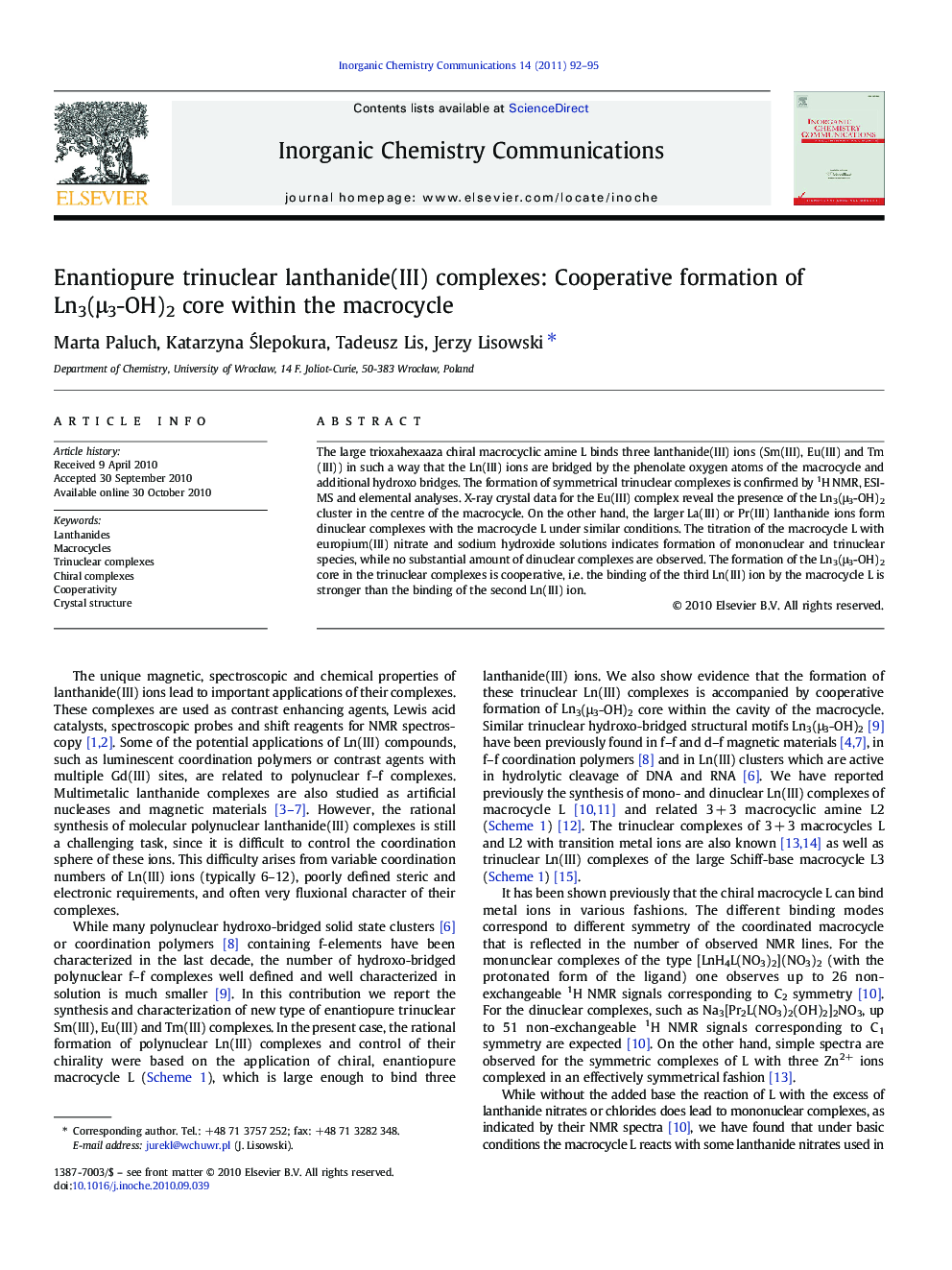| Article ID | Journal | Published Year | Pages | File Type |
|---|---|---|---|---|
| 1305845 | Inorganic Chemistry Communications | 2011 | 4 Pages |
The large trioxahexaaza chiral macrocyclic amine L binds three lanthanide(III) ions (Sm(III), Eu(III) and Tm(III)) in such a way that the Ln(III) ions are bridged by the phenolate oxygen atoms of the macrocycle and additional hydroxo bridges. The formation of symmetrical trinuclear complexes is confirmed by 1H NMR, ESI-MS and elemental analyses. X-ray crystal data for the Eu(III) complex reveal the presence of the Ln3(μ3-OH)2 cluster in the centre of the macrocycle. On the other hand, the larger La(III) or Pr(III) lanthanide ions form dinuclear complexes with the macrocycle L under similar conditions. The titration of the macrocycle L with europium(III) nitrate and sodium hydroxide solutions indicates formation of mononuclear and trinuclear species, while no substantial amount of dinuclear complexes are observed. The formation of the Ln3(μ3-OH)2 core in the trinuclear complexes is cooperative, i.e. the binding of the third Ln(III) ion by the macrocycle L is stronger than the binding of the second Ln(III) ion.
Graphical AbstractNovel trinuclear lanthanide(III) (Sm(III), Eu(III) and Tm(III)) complexes of a large chiral 3 + 3 macrocyclic amine L have been isolated and characterized. The crystal structure of the Eu(III) complex reveals the presence of the Ln3(σ3-OH)2 cluster in the centre of the macrocycle.Figure optionsDownload full-size imageDownload as PowerPoint slide
